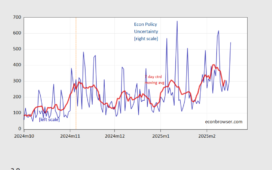Lambert here: “Original accumulation” is such a neutral-sounding term.
By Ramin Skibba, an astrophysicist turned science writer and freelance journalist who is based in the Bay Area. Originally published at Undark
Humanity’s dependence and impact on nature have never been more clear than today, in a world enveloped by climate-driven storms and wildfires, air pollution, and dwindling natural resources. But the relationships societies and empires have had with the environment, especially exploitative ones, go back a millennium, and that tumultuous history has shaped the rapidly warming planet we live on now.
Sunil Amrith, a history and environmental professor at Yale University, chronicles these global changes in his wide-ranging new account, “The Burning Earth: A History.” It’s his second book since winning a prestigious MacArthur Fellowship in 2017, and much broader in scope and ambition than his South Asia-focused previous work, “Unruly Waters.“
Here, Amrith follows disparate, and often disastrous, efforts to conquer and control nature in the name of exploration, expansion, development, and progress. His thorough and accessible survey traces civilizations as far back as the 13th-century Mongol empire. “To have any hope of undoing the densely woven braid between inequality, violence, and environmental harm, we need to understand its origins,” he writes.
In Amrith’s view, all history is environmental history. And that includes both environmental effects on societies and those societies’ impacts on the environment. He cites evidence, for example, suggesting that a “medieval warm period” spanned most of Europe and parts of North America and western Asia through the 13th century. The period’s benign climate and rainfall, he argues, allowed societies to clear land, expand cultivation, build cities, and grow their populations. He also assesses the rise and fall of the Mongols, who swept across Asia quickly before being thwarted by limited grasses for their horses, intense snowstorms and earthquakes, and deadly plagues that the Mongolian expansion helped spread.
In his analysis, the colonial expansions of the 15th through the early 20th centuries transformed the global distribution of power and wealth while devastating both Indigenous populations and the natural world through deforestation and other ecological harms. He highlights in particular the pivotal role of the early 15th-century Portuguese settlers on the island of Madeira. The settlers razed forests for single-crop sugar plantations, exhausted the land, and then moved on. “Madeira’s ruin marked a new phase in the history of human exploitation: a tightening of the knot that ties human suffering to the destruction of other forms of life,” he writes.
Around the same time, the European colonial powers initiated the slave trade, which deprived the enslaved of their freedom as well as their vital links to their land and food sources. He details how Christopher Columbus and other Iberian conquistadors brought with them both war and deadly diseases that wiped out most of the Aztecs and Incas. And he cites the paleoclimatologist William Ruddiman, who speculated that the era’s large-scale depopulation and the reforesting of denuded landscapes may have played a role in the minor planetary cooling event in the 16th century called the Little Ice Age. Thanks to European settlers, many habitats vanished and species declined across the world, including whales, land mammals like sables, and numerous birds.
At first, it’s hard to detect the broader significance of this grim history of destructive colonialism. But as Amrith zooms in on the 1800s and 1900s, interesting insights begin to emerge. One notable example is the growing production of nitrogen, first for agriculture and then for weaponry. The German chemist Fritz Haber invented a way to create artificial nitrogen in the early 1900s, and partnered with the conglomerate BASF, whose engineer Carl Bosch was able to scale up the process to produce it commercially. That industrialized process would become the world’s main nitrogen source, eclipsing imports from Chile, which had been exporting nitrates extracted from the Atacama Desert.
Haber and BASF subsequently worked to aid Germany during World War I, making nitric acid for explosives, and Haber advised the German military as it made chlorine gas and other chemical weapons for use in trench warfare.
At the same time, nitrogen was increasingly used in agricultural fertilizer during a time of rapid urbanization, which proved to have a profound environmental impact when it was later discovered in the 1990s that fertilizer runoff creates toxic conditions for aquatic ecosystems and contributes to harmful algae blooms. Unfortunately, Amrith doesn’t deeply explore this part of nitrogen’s history.
But he identifies other historical links to the environmental challenges of today. These include, of course, the invention of the steam engine and the burning of fossil fuels, which began during the Industrial Revolution. The invention of cars proved especially transformative — there were already more than 27 million in the United States by 1929, or one for every household.
The book also includes an excellent account of the horrific environmental impacts of the two world wars, culminating in the firebombing of Dresden and Tokyo, and the dropping of atomic bombs on Hiroshima and Nagasaki in 1945, which killed an estimated 110,000 to 210,000 people and released harmful radiation into the air, land, and water. The wartime fires from all those bombs resulted in emissions of possibly more than a billion pounds of soot in the atmosphere, which, like massive volcanoes, may have temporarily affected the Earth’s climate. “That such colossal impact is even plausible marks the dawn of a planetary power beyond comprehension,” Amrith writes.
Within a few decades, humanity began wrestling with not just nuclear arsenals but also with climate change, and now the potential of solar engineering, which “epitomizes the furthest extension of the hubris that human beings can conquer nature,” as Amrith puts it.
Along the way, he also highlights the role of key figures in the environmental movement, such as Hannah Arendt, Rachel Carson, and Indira Gandhi, who all delivered messages about the destructiveness and arrogance of attempting to control nature. The stronger final sections detail the beneficial efforts of modern rubber tappers, rainforest protectors, and Indigenous activists, pointing to new visions of societies flourishing with nature. And he documents efforts toward environmental justice, a concept popularized by the biologist Barry Commoner and the policy researcher Robert Bullard in the 1970s.
But he doesn’t fully extend this analysis into the current era, when U.S. and European leaders and foreign policy officials have continued an extractive approach to natural resources in the Global South.
Even so, “The Burning Earth” is a welcome complement to important historical critiques of social injustice and inequality by authors like Howard Zinn and Eduardo Galeano. His deeply researched account “builds from a patchwork of attachments to many different places, distant from one another, most of them cities far from any wilderness,” he writes. “It is history for an urban, globalized, and divided planet, written from a position of empathy for the all-too-human dreams of fossil-fueled escape that now lie in ruins.”














